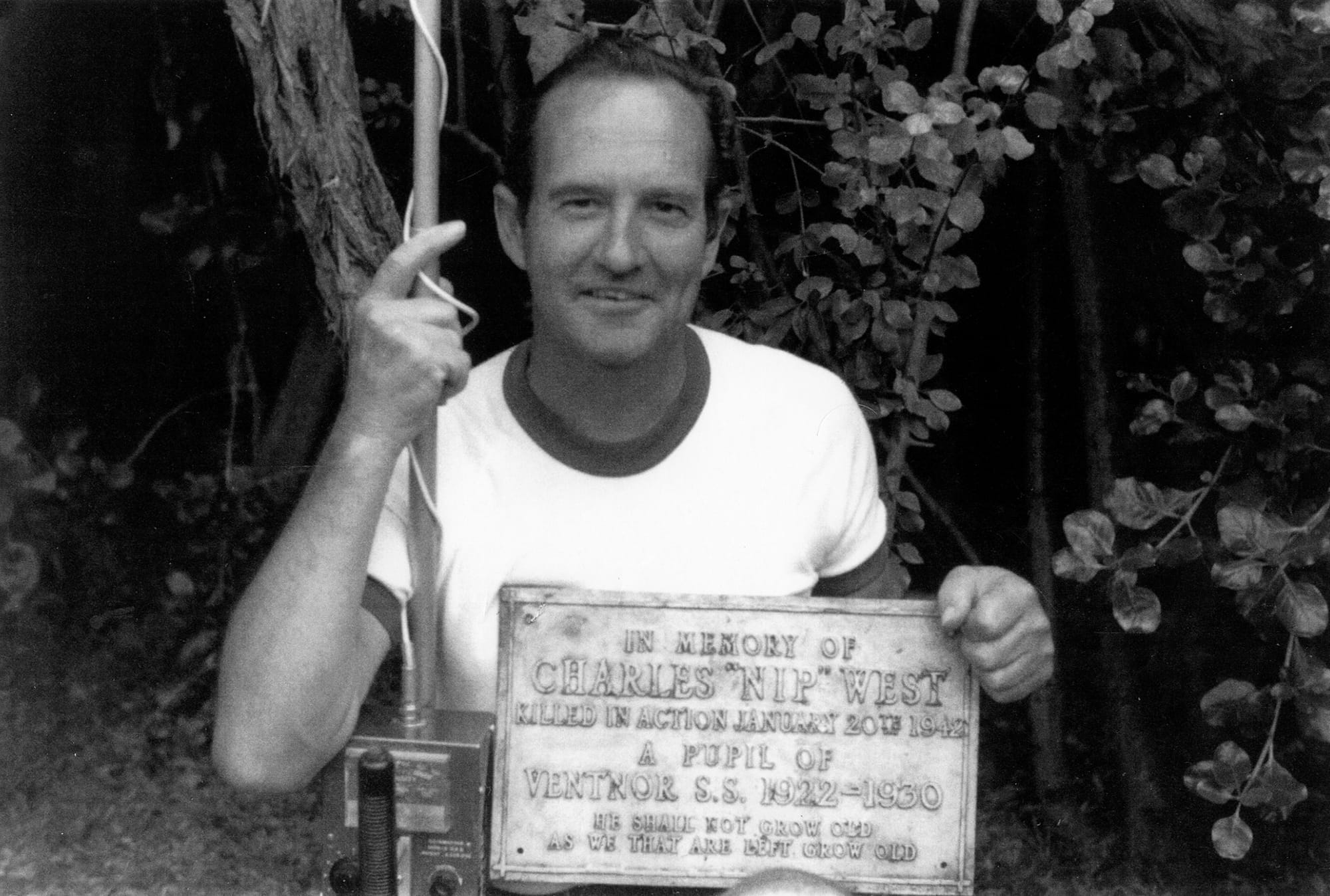The story of Nip West
The tragedy of war strikes in Ventnor The death of Nip was a great blow to the little community of Ventnor. He and his older brother (Gordon ) tossed a coin to see who would go to war. One was to stay at home and help their widowed mother run the...

The tragedy of war strikes in Ventnor
The death of Nip was a great blow to the little community of Ventnor.
He and his older brother (Gordon ) tossed a coin to see who would go to war.
One was to stay at home and help their widowed mother run the family’s chicory farm.

It was the younger brother, Nip, who went off to war from the Cowes pier, and the whole community turned out to farewell that much loved son.
Nip was rather a special man . . . a gentle, caring human person who every one held in high regard.
When news came in January 1942, that Nip had been killed, the entire community was stunned.
There was a deep sense of loss both in his family and the community.
Gordon grieved so deeply for the loss of his much-loved brother that his health never recovered from the loss of his brother.
He finally died there.
Mrs West took the loss of her sons with great courage.
Professor Manning Clark makes mention of the Nip West story and the courage of the West family in a volume of his “History of Australia.”
Manning Clark was an island resident at the time.
The community of Ventnor was not a prosperous one following the war, but they were determined to have a memorial for Nip in the school grounds, so that his memory would live on at Phillip Island and in Australia forever.
The community gave all they could afford and a tree was planted and memorial built in Nip’s memory.
The tree is still there today, and the schoolhouse is now a private home. The plaque is held for safe-keeping at the Heritage Centre in Cowes.
An excerpt in a book tracing the history of St Phillip’s Church of England in Cowes mentions the story of Nip West.
In the words of the Reverend Hall: “My saddest task was, on one occasion, to go down and meet the ferry, to tell Ma West (who had been away for the day) that her son Nip had been killed in the war.”
“Almost the whole Island was there, and Ma (everybody knew the fine old lady as Ma) walked up the ramp from the ferry towards me and before I could open my mouth, said ‘Nip’s gone hasn’t he, I knew it’.
“She took my arm and said: ‘Don’t let me fall’ and walked, head erect to a car waiting for her, amid a respectful silence.’
The information for this story was supplied by Julie Box, a small girl at the Ventnor school when Nip died, who adds her own tribute.
“I always think of Nip and Gordon and their fractured lives each time I drive past the old Ventnor school site.
“As a little girl I brought flowers on Anzac Day to Nip’s memorial and dad always talked of Nip West and his great sacrifice.
“I still remember 50 years on when they built the memorial to a lost son of Ventnor with a lump in my throat.”






